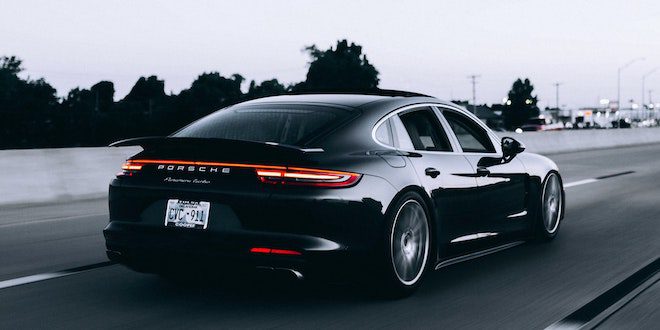Last Updated on September 21, 2023
Selecting between purchasing and leasing an automobile is a difficult decision to make. On the one hand, purchasing entails greater monthly payments, but you end up with an asset—your automobile. A lease, on the other hand, provides down payments and enables you to drive a car that is more valuable than you can afford to buy, but you are trapped in a circle in which you will never be able to quit spending on the car. Therefore, when weighing up leasing vs buying a car, this makes for a difficult decision for many. However, the leasing boom isn’t going away anytime soon, with more consumers choosing to rent over a loan than only a few years ago.
Buying a car with a typical auto loan is straightforward. You purchase money from the bank, credit union, or other lending organization and pay it back in installments on a yearly basis.
A percentage of each installment is used to pay the loan’s interest, while the remaining is used to pay off loans. The greater the interest rate, the larger the payments. As you return to the principle, you build wealth until you own the entire vehicle at the conclusion of the loan. You are free to retain the automobile for as long as you like and to treat it any way you see fit. The only implications of alteration or misuse might be increased repair costs and a decreased prospective resale value.
The Great Lease vs. Buy Debate
View this post on Instagram
There are two important ways to pay for a car: lease or buy. There are advantages and disadvantages to each choice, so it helps to know what you are getting into before you sign on the dotted line. And you better believe that no matter which option you choose, there will be a dotted line. But what does cheap car leasing exactly mean? And how does financing a car fit into the equation?
Leasing a car can save you money – or cost you more than buying
When you lease a car, you enter into an agreement that includes predetermined monthly payments and mileage limits (usually 12,000 miles/year). Your payment is determined using the vehicle’s residual value (the price at which it’s estimated to be worth when the lease ends), the money factor (the interest rate) and depreciation.
What is leasing?
View this post on Instagram
Leasing is essential renting a car for a set period of time. When you lease a car, you don’t own it, but you can drive it around all you won’t like it’s yours. The term “leasing” comes from the fact that when you’re done using the car, you return it to the company that owns it—just like when you’re done with a bar of soap.
Leasing is like renting an apartment. You make monthly payments, but instead of building equity, you’re paying off the depreciation on a vehicle over its useful life. Basically, you’re paying for the part of that car you’ll use before it starts falling apart—the part where the cup holder doesn’t break off in your hand when you go to take a sip of coffee on your way to work, for example. But with leases, you have to be careful about how far over your mileage limits you go—so make sure you estimate how much driving you do a year before you sign anything!
Travelling road trip
But there are downsides to leasing: if money’s tight or if you have bad credit, getting approved for a lease can be trickier than getting approved for an auto loan. And if your lifestyle is tough on cars—you have kids or pets who ride with you often, or drive off-road or in inclement weather—leasing probably isn’t for you. Having a plan for weekends where you and your family enjoy road trips can be easily affected with no car available. So trying to get to the point where you make a simple decision for a comfortable conveyance. If you think for leasing – so, a leased car has to be returned in good condition (certain modifications aren’t allowed), and if the car’s value drops too low because of wear and tear or mileage overages, then you’ll be on the hook for extra fees at the end of your contract.
You may also like: 7 Things You Need To Check In Your Car before That Road Trip
What is financing?
Financing means buying something on credit, or in other words getting a loan to buy something new that you’ll pay off later. In this case, we are talking about getting a loan to buy a new car. When your loan is paid off, the car is legally yours. You can drive it around all you want as it belongs to you. And that’s because it does—you bought it! Let’s start with finance. Financing a new vehicle means that you’re taking out a loan to cover the cost of the vehicle. In other words, you’re borrowing money from a financial institution (usually a bank or credit union) that you’ll pay back with interest over an agreed-upon number of months or years. Leasing is not the same as financing. When you lease a vehicle, you are essentially renting it for an agreed-upon amount of time. You’ll make monthly payments for the entire lease term, but when that term expires, you won’t own the vehicle—you’ll have to return it to the dealership and either buy it outright at market value or lease another vehicle.
The Pros of Leasing
-No down payment! Whoo!
-Low monthly payments
-New cars!!! No odours or stains, yay!
-No repairs! If anything goes wrong, it’s not your problem! The other person’s problem! You’re free! You’re free of responsibility!
-You can get more cars for less money. We know—it sounds too good to be true! But it’s not! Because you’re not paying for the whole value of the car, your monthly payment will be lower than if you financed it. Also, because you’re paying less in one big chunk, sales tax is lower on those payments than on purchasing a vehicle outright.
-You get to drive around in a new car all the time (if that’s what you want). If you hate breaking in new cars and getting used to them.
The cons of leasing
– Mileage limits
– Cannot elect to ship the vehicle
The ultimate question – Leasing vs Buying: Which is Best for You?
In the beginning, there were two roads: One led to leasing, and the other to buying. Each had pros and cons. Here’s the deal: when you lease, you’re renting your car. You’re paying for the right to use it until your contract ends, and when you return it to the dealership. When you finance a car, you gain ownership of it—you’ll keep it forever until you decide to sell it or trade it in. At the end of the day, leasing is the smarter choice for people who want a brand new car every few years. If that sounds like you, a lease can be a great way to get behind the wheel of something fresh, shiny, and new for less money per month than financing will cost.
Conclusion
While it’s true that you can lease or buy a car, it’s not true that these are your only two options. You could also use the money you don’t have to buy a car to take out a loan for the car and then use the money from the loan to pay off the loan for money that doesn’t exist. But if that’s not your thing, there is an alternative: leasing or buying. We’re guessing now you know what “buying” is, and what is “leasing.” So, leasing is the smarter choice for people who want a brand new car every few years.
You may also like: 6 Tips for Having a Fun Road Trip
 Travel for Food Hub The Food Blog for Travel Lovers
Travel for Food Hub The Food Blog for Travel Lovers















